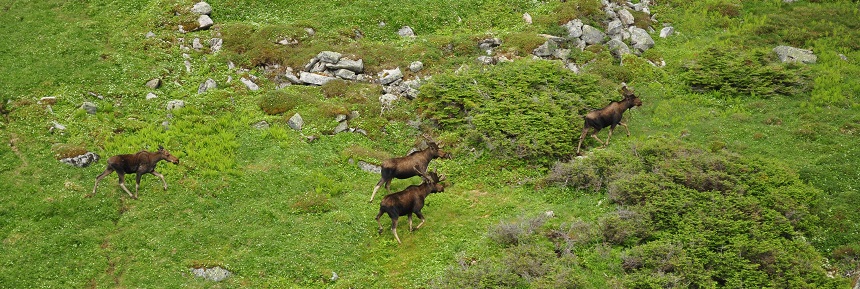
Forest Health In Gros Morne National Park
The forests of Gros Morne National Park face serious threats to their long-term health. Parks Canada has, through its ecosystem monitoring program, surveyed the extent of the damage and determined intense moose browsing to be the main cause.
Forest Health in Gros Morne National Park
Transcript
Many visitors who come to Gros Morne Park are of course awed by the geological wonder, the Western Brook Pond Fjord, the Table Lands and sometimes they almost overlook the forest, it’s so obvious on the landscape but in fact it’s in the forest where we have one of our that we have one of our big ecological issues in the park. We’ve got a problem in that we’ve got too many moose in the park, what we call a hyper-abundant species. Moose were introduced to Newfoundland back in the late 1800s and early 1900s. There was no major predator and we also then excluded hunting when the park was formed and so the moose population expanded very rapidly. Well through years and years and years of browsing, the moose have effectively prevented the next generation of forest from regenerating over a very large area in the park. In fact, over 65 square kilometers of the park has now been converted from forest into a grassland-like state. This scale is to the point where we’re actually seeing changes in biodiversity in the park and changes to the animal communities and the plant communities in the forest. We recognised we had a serious problem, so what we did is we consulted with a number of stakeholders and experts in the field and started to look for, well what are the solutions that would bring back the forest regeneration, that normal process in Gros Morne National Park. In the end it was decided that the most appropriate thing to do would be to have a population reduction, what we call a lethal reduction, which is essentially a hunt. So this moose population reduction has had four years so far, we’re entering into our fifth year now, and we’ve actually seen quite a significant reduction in the numbers of moose in the park. There have been over 3500 hunting licences issued for the park area. That’s led to about a 30% drop in the population, about a 1400 animal reduction in the population of moose. That has corresponded with improved regeneration in the forest One of the things we’re seeing in our vegetation monitoring in particular is that some areas are regenerating better than others, and not surprisingly, it’s areas that have high hunter access. In more remote areas in the park such as these areas behind me, in the mountains, it’s hard for hunters to access those areas and so in the next few years we’ll be trying to target those back-country areas that to date haven’t really seen very much hunting pressure. When we get to that healthy forest regeneration stage, we’ll know that the moose population has been reduced sufficiently, and from then on we’ll be maintaining the moose population at that size. Parks Canada has been working for many years now with stakeholders and partners in the public to find solutions to our forest health issues and it’s important for us to always recognise that this moose population reduction is really all about restoring the forest. So this beautiful forest we see behind me is really where we’re trying to get to and ensure that in the long-term, for future generations, that Gros Morne sustains a healthy forest ecosystem.Moose were introduced to Newfoundland over 100 years ago. In the absence of predators, and with an abundant food supply, their numbers increased dramatically. Today, moose populations in the national park are greater than the forests can support; forest diversity is in decline.
This website provides information about Parks Canada’s approach to forest health management in Gros Morne National Park in Newfoundland and Labrador. It also explains how Canadians can get involved in helping to restore the health of these forests.
- Date modified :